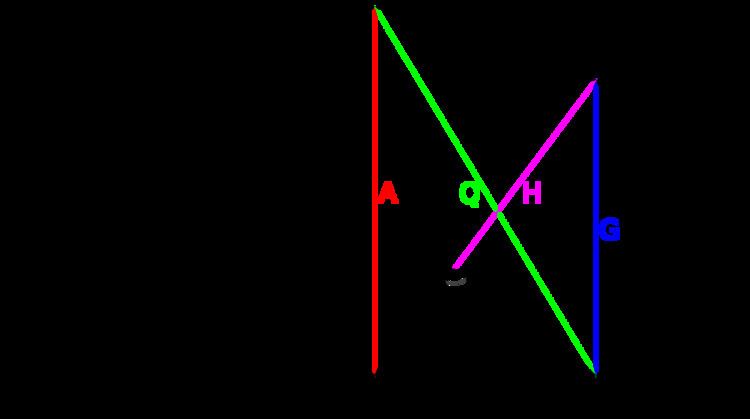 | ||
In mathematics, the three classical Pythagorean means are the arithmetic mean (AM), the geometric mean (GM), and the harmonic mean (HM). They are defined by:
Each mean has the following properties:
These means were studied with proportions by Pythagoreans and later generations of Greek mathematicians because of their importance in geometry and music. The harmonic and arithmetic means are reciprocal duals of each other for positive arguments (
Inequalities among means
There is an ordering to these means (if all of the
with equality holding if and only if the
This is a generalization of the inequality of arithmetic and geometric means and a special case of an inequality for generalized means. The proof follows from the arithmetic-geometric mean inequality,
The study of the Pythagorean means is closely related to the study of majorization and Schur-convex functions. The harmonic and geometric means are concave symmetric functions of their arguments, and hence Schur-concave, while the arithmetic mean is a linear function of its arguments, so both concave and convex.
